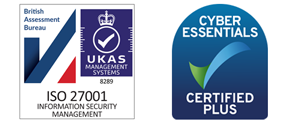Testing a workload through a Proof of Concept will enable you to determine the capacity required for a major resource allocation to cloud. You will then be able to compare how an application performs running in Azure versus on-premises. Network performance and latency should also be carefully considered here.
Our Azure offering includes:
-
Azure tenancy setup
-
Agreed migration of initial workloads
-
The building of any core IT infrastructure services required to support your workloads. Ask one of our expert team for more details of what this element can contain.
The final part of this stage should be a documented plan that includes technical details such as the compute capacity and storage; the required virtual network policies; a considered evaluation of the current demand of your on-premises services, accounting for potential growth; and an initial cost evaluation.



.png?width=250&height=99&name=Partner-logos-rectangle-colour-Nov21%20(2).png)
